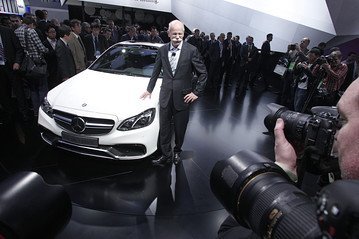Horsepower Becomes Main Selling Point for Luxury Cars

Big luxury brands are hoping to expand an elite market of drivers who are drawn to high-end performance vehicles engineered to racing standards, cars like BMW’s M series, Audi’s RS models, Cadillac’s V-series and Mercedes-Benz’s AMG line.
These extreme performers have upward of 500 horsepower under the hood (more than double what’s in a garden-variety luxury sedan) and can zip from a stop to 100 km per hour in 4 seconds or less—all while burning gas more wantonly than a big pickup truck.
To draw in a new generation of affluent car-enthusiast buyers, the big luxury brands are expanding their lineups of high-horsepower cars. They’re using new technology under the hood to make their beasts more fuel-efficient and smooth-riding. Some brands, including Daimler AG’s Mercedes and General Motors Co.’s Cadillac, are looking to offer more affordable vehicles in their elite performance lines.
More affordable—but not cheap. Most of the limited-volume, pumped-up versions of cars such as BMW AG’s 3-series coupe or the Mercedes-Benz E-Class sedan have starting prices tens of thousands of dollars higher than standard models. They command those premiums because sin still sells. A $90,000 Mercedes E63 AMG sedan that roars from a dead stop to 60 miles per hour in under 4 seconds is an exclusive, guilty pleasure.
Industry executives estimate that luxury brands sell about 30,000 to 50,000 vehicles a year through their high-performance sub-brands. Sales tend to rise when new models are launched.
Low-volume, high-performance cars bring in a wealthier, more avid clientele. The buyers of Mercedes AMG cars, for example, are mostly men in their early 50s with a median income of about $430,000, compared with $191,000 for buyers of the brand’s standard models. Many have multiple luxury vehicles.
Related News


